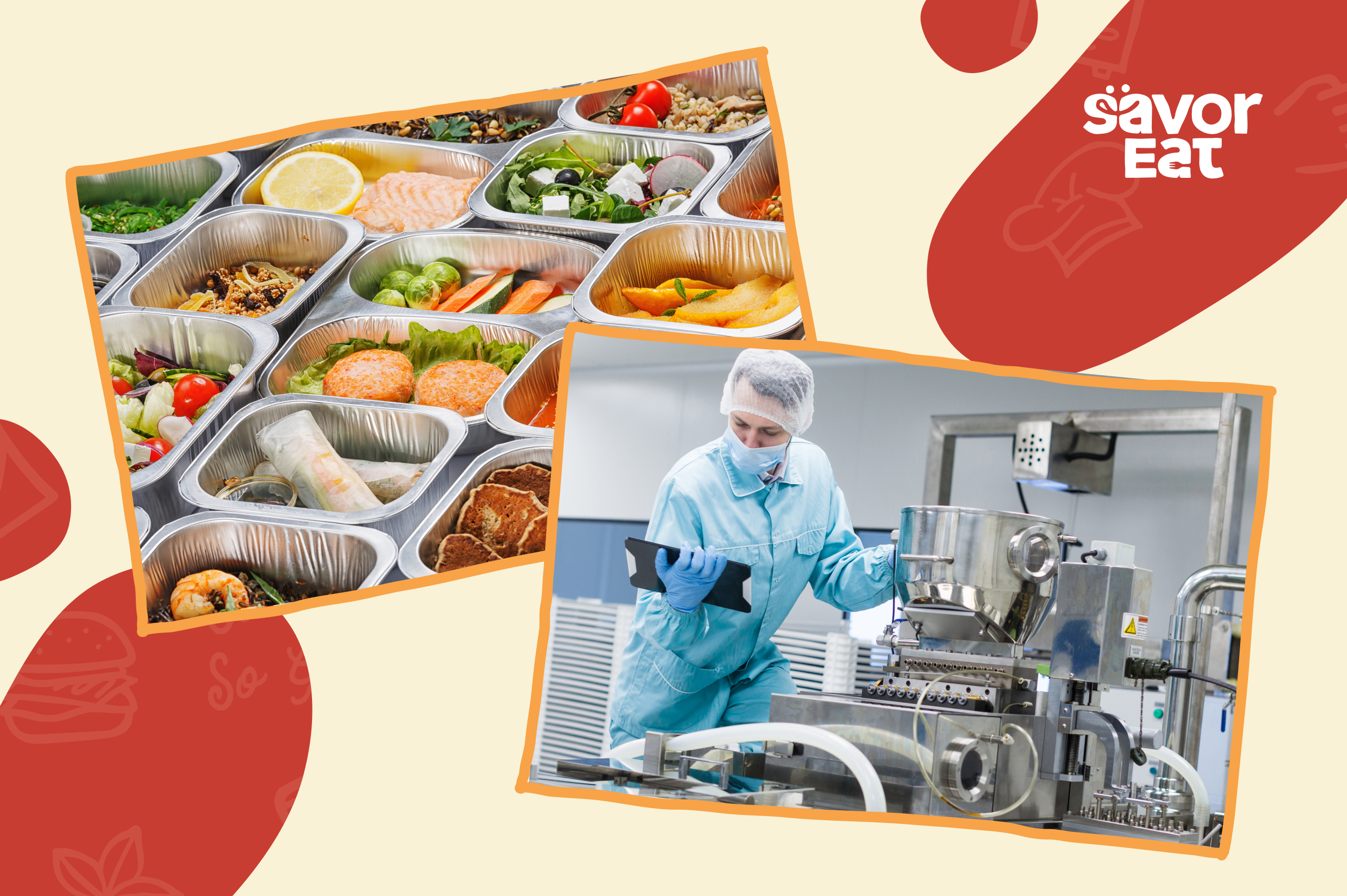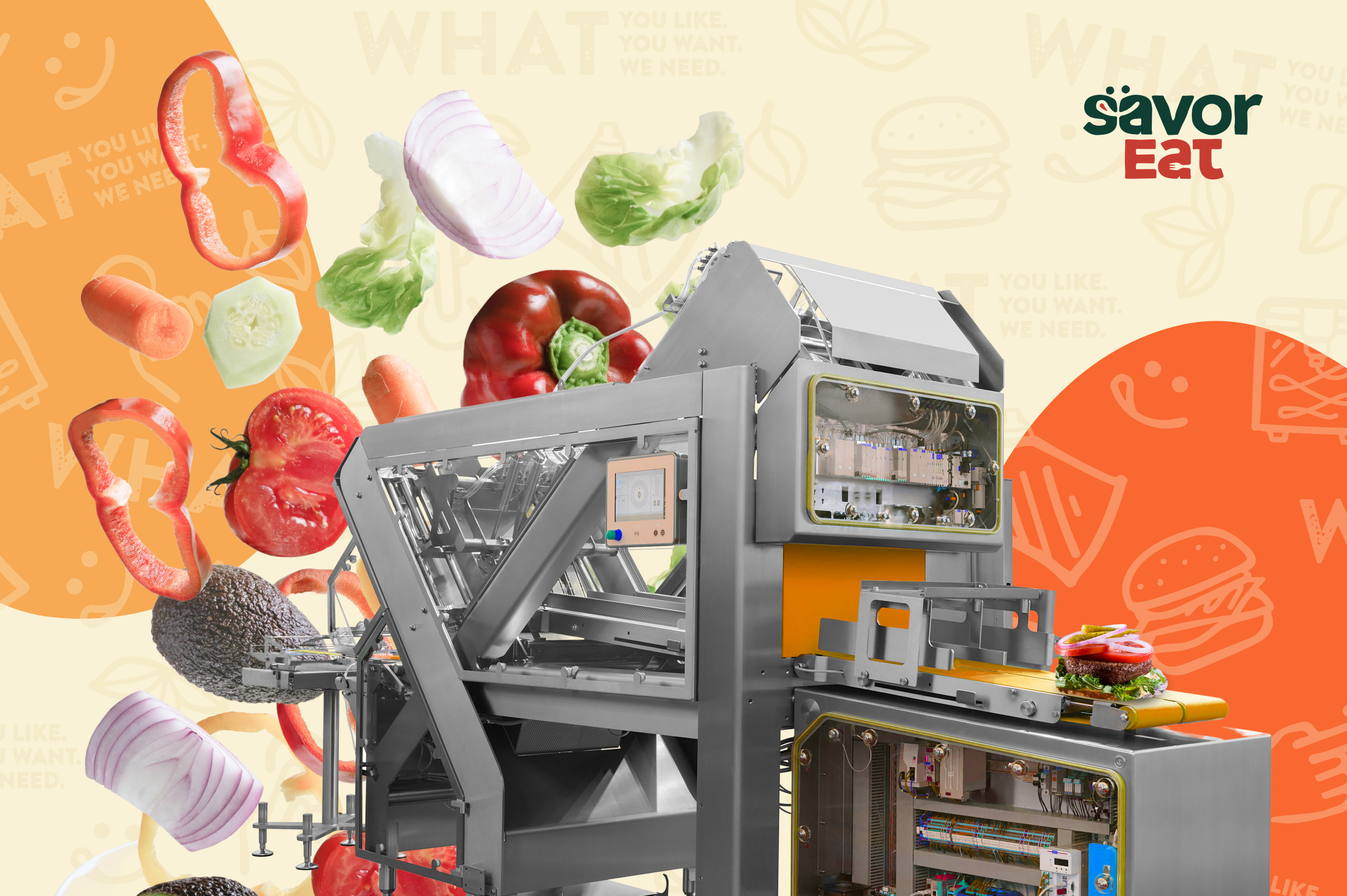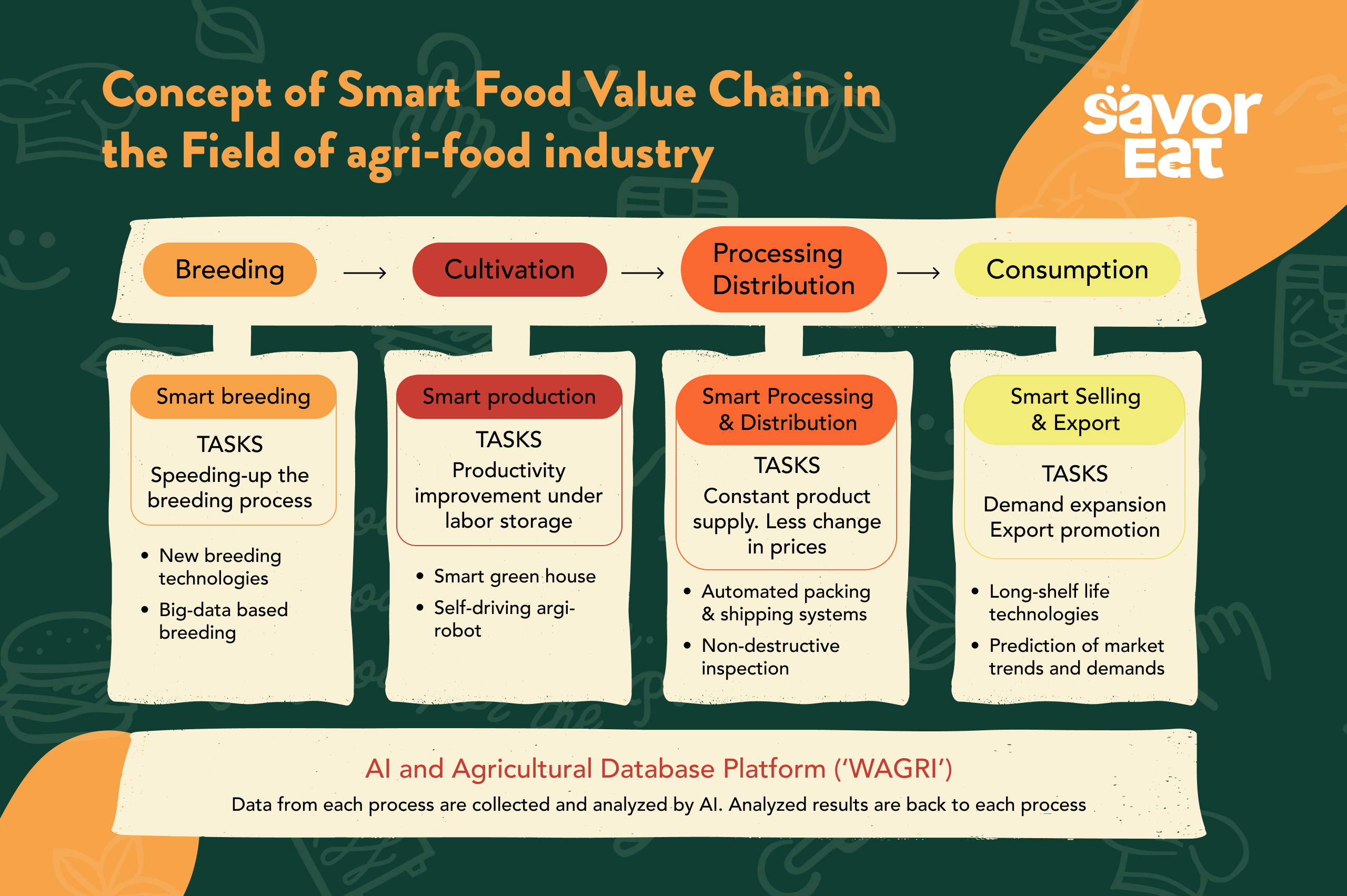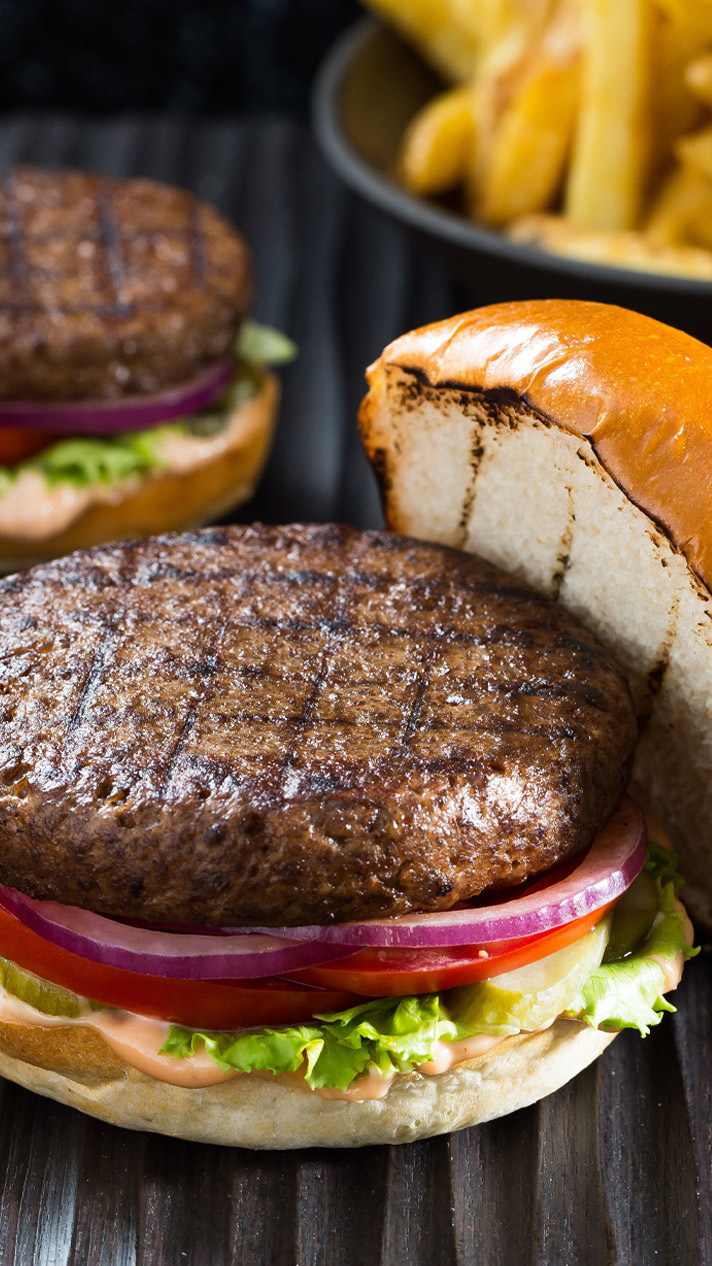Like many industries, the food industry was greatly affected by the pandemic. Being unable to operate normally and extended lockdown and restrictions set by the government, the industry faced a significant setback in 2020. As we are coming out of the most disastrous pandemic in generations, the food industry still faces many challenges in managing its operations.
“We continue to face significant challenges as a business and remain in constant crisis management mode to ensure that we are not being adversely affected by the current inflationary environment.” ~ Food Manufacturing Business
Food is a basic necessity of our lives, and we couldn’t just stop eating because the world was facing a pandemic and was shut down. In reality, the growing world population and food demands drive growth in the food industry. The food market is expected to grow by 6.72% annually from 2022 to 2027. Though the pandemic is behind us, and restaurants and food services are back to normal, several challenges are still facing the food industry.
This article highlights some of the significant problems in the food industry, the latest trends, difficulties expected in the future, and the future of the food industry.
What are the Food Service Industry’s Most Pressing Issues Today?

Every food service business is unique and may deal with different situations based on its food services and customer requirements. Despite the difference in services, every restaurant owner has to face common issues and challenges. This section of the article provides information about today’s most pressing issues in the food service industry.
Food Safety
People’s health and safety is the responsibility of the food service industry since any mishandling, contamination, or reported foodborne illness can lead to severe consequences for both the people and the one who delivered the food. This makes food safety a significant concern for the food service industry.
Moreover, today’s food trends that catch on quickly cause many food-related problems, demanding food safety professionals to respond immediately. Food safety culture is necessary for the workplace. The production facilities should have proper food safety policies and regular walk-throughs to monitor food safety and trends.
Food Wastage
While restaurants is considered a clean industry, they considerably contribute a massive quantity to the waste stream. The total amount of food waste is estimated to be 103 million tons annually in the US. Food is wasted due to several reasons, including overproduction, processing problems, bad weather, and unstable markets.
However, this comes with a price tag and costs countries a lot. Moreover, wasted food also impacts the environment since many valuable resources, such as water and farmland, are also wasted. There should be a check and balance for wasted food, and the food service industry should ensure as little as possible food is wasted. According to food experts, reducing food waste by only 15% can provide food for more than 25 million Americans yearly.
Rising Supply Chain Costs
The food service industry faces many issues managing food supply chains, including food safety, lack of traceability, etc. Increased food supply chains cost is one of them. Managing food supply chain costs is not easy. It does not include the cost of supplying food but also energy and fuel, workforce, and the cost of new technology. Moreover, keeping a check on operating expenses is another concern.
The first step to control costs is to get them measured. For simple supply chains, you can track expenses in spreadsheets. Complexed supply chains demand technology solutions. You can use a supply chain platform that uses AI to keep a check on costs and reduce them.
Increased Consumer Demand for Food Traceability
Food traceability is tracking the food product while passing through all the stages of supply chains. Today, many consumers demand food traceability since they want to know where all food ingredients and products come from. This increases the demand for food products data to be available on food products and supply chains.
Lack of traceability can expose the food service industry to unnecessary risks as well as weaken consumers’ trust, leading to lower sales and profits. However, food traceability can enhance food safety and brand integrity, increasing customer trust in the brand.
Food Fraud
Food fraud is another pressing issue in the food service industry. It happens when a food business intentionally deceives its customers about the quality or content of the food delivered by them to gain the advantage. Food fraud can damage consumer trust and introduce severe health risks to them.
The food service industry should inform businesses about food fraud practices and how to prevent them. You can review your supply chain to monitor any food fraud, double-check incoming products, and make the entire supply chain transparent to prevent food fraud in your business as much as possible.

What is the Common Problem in the Food Manufacturing Environment?
Food Manufacturers have to face unique challenges every other day. While these challenges are part of the food manufacturing process, some can surely take a toll on one’s business and mind, and tackling these challenges on a daily basis is a task. Let’s look at some of these common problems in the food industry.
-
Labor Shortage
The labor shortage is another problem in the food industry. Until recently, labor shortage in the food industry was linked to special events, such as the pandemic being the most obvious example. Worker numbers were expected to normalize post-pandemic, but that didn’t just happen, contributing to difficulties in staffing levels and other problems.
-
Upholding Safety Standards
With an increasing number of laws, and regulations governing the sector, the food industry finds it difficult to keep up with all the standards while managing higher production demands. Moreover, new regulations often require quick implementations, making it more challenging for the food industry to understand and follow standards accordingly.
For instance, Natasha’s Law aims to protect consumers with food allergies and demands businesses to conduct more effective traceability and management of allergens.
-
On the Rise Inflation
Inflation is one of the problems caused by the pandemic since restaurants faced huge losses. It has a significant impact on the food industry, affecting food prices. While moderate inflation is acceptable as it is good for the economy to grow, too much inflation is hard to ignore. Pandemic after-effects, labor difficulties, and severe climatic conditions are a few reasons for the rise in inflation in the food industry.
-
Increased Customer Demand
Today’s consumer is well-aware of what must go into the body and demands accordingly. Their expectations include product transparency, health inclusion, and innovative, tastier foods. Moreover, consumers expect food manufacturers to stay relevant with the increasing technology and utilize it.
What Challenges are Faced by the Food & Beverages Industry?
This section will explore the challenges in the food and beverages industry. But first, let’s look at the Global Food & Beverages Industry.
Overview of the Global Food & Beverage Industry
Due to increasingly changing consumer demands and behaviors, technological advancements, and rigorous regulations, the food and beverage industry has seen an era of significant changes in the past decade. While some factors have presented many challenges, other factors have also benefited the industry much in terms of technology.
Driven by advancing technologies and demand for healthier, cheaper, and safer food products, the food tech market is expected to exceed $342 billion by 2027. Today, consumers do not judge a food or beverage product based on its quality but also on what nutritional value the food provides. As a result, the food and beverages industry needs to implement changes in its existing processes.
Challenges to the Food Industry
As mentioned earlier, the food industry faces significant challenges. However, each era has different challenges based on consumer demands and industry standards. Today’s challenges include.
Plastic Ban Enforcement
Plastic bags have become a threat to animals living on earth and in water. The consistent growth in the industrialization of the food and beverage industry has had a disastrous effect on the environment and led to the enforcement of plastic bags.
The food industry has to ensure a plastic ban in making the food process, whether manufacturing or delivery, eco-friendly by adopting numerous recycling practices. Excess plastic consumption and improper disposal have come up as a unique challenge facing the F&B industry.
Improving Online Visibility
The pervasive presence of eCommerce presents challenges to the food and beverages industry to improve its online visibility. Technological advancements drive today’s consumer demands, and they have become more digitally informed. This, in turn, raises their expectations. Moreover, the proliferation of technology in restaurants and food delivery services has forced the food industry to analyze and upgrade its online presence.
With the emergence of tech and newer markets, consumers’ changing nature, and digital transformation, companies in the F&B industry have to focus on online marketing products. Tackling this challenge can help the food industry serve better, and stay ahead of its competitors, and issues in the food industry.
Increased Demand for Vegan Food
Increasing food-related disorders have made consumers more health conscious and turn towards a healthy lifestyle. Consumers demanding plant-based food, meat, and other products might face a significant decline in their consumption.
This poses a serious challenge to the food industry since manufacturers have to maintain their reputation related to animal treatment. Companies in the food and beverages industry might have to come up with plant-based meat-free alternatives to keep the industry running.
Stringent Regulatory Landscape
Many food and beverage companies adhere to regulatory standards to keep their business running. But the consistent change, driven by increased production, food quality, waste disposal, raw material, and advanced technologies, emerge as an obstacle for the F&B industry in following the regulations.
To deal with evolving regulatory policies and standards, companies should improve their business operations, from manufacturing to distribution.

Top 4 Trends in the Food Industry
The food industry can expect to see many ongoing trends and some other trends emerging as the pandemic’s ramifications. The rise of food tech, eCommerce, and robotics has led the food industry to invest vast amounts like never before. Innovations in sustainability practices will remain a top priority for food manufacturers, driven by the growing consumer demands and ESG requirements.
This section will highlight some of the emerging F&B industry trends you can expect in 2022 and beyond.
Increased IoT Connectivity & Automation
The food industry has been considerably slow in adopting new technology solutions. However, today, it is ready to embrace modern technologies like Artificial Intelligence, Machine Learning, and automation. These technologies will reduce human error and help food manufacturers and processors cut down on food waste, reduce lead time, optimize supply chains, remove production bottlenecks, and make consumers happy.
In the wake of the pandemic, the food industry also faced labor shortages. By embracing automation and robotics, food manufacturers will be able to meet customer goals, even with fewer on-site employees.
Health Comes First
The pandemic has also led to the usage of functional food. Today, consumers don’t just want tasty food. They demand food that also promotes health and boosts the immune system. Food products containing vitamin D and probiotics have become more popular as consumers are more concerned about what they’re eating. According to research, the global functional food ingredients market is expected to reach $99,975 million by 2025.
Increase in Demand for Plant-Based Foods
In the last 15 years, Americans’ plant-based diets have increased by 300%. Increased post-pandemic health concerns drive consumers’ desire to eat plant-based food; manufacturing companies need to adapt accordingly. With new processes scaling up, specialists might also work to transform existing processes and bring well-established food science expertise to conventional foods.
Balance Between Food Service & Retail
With 64% of consumers not planning to return to their pre-pandemic dining habits, 61% prefer ordering takeout or delivery at least once a week. This is just one example of how COVID-19 has changed consumer behavior, and the food industry needs to adjust to consumer demands.
This also led to a decreased demand for food supplied to restaurants and increased demand for retail stores. There is a need to maintain a balance between these two markets that are expected to evolve more this year.
What Problems has the Food Industry Already dealt with?
The food industry’s problems can never be addressed entirely. However, using food tech and other practices can reduce the problems in the food industry to a minimum. The food industry is dealing with some of these problems and has successfully addressed these challenges. Here, we will discuss two of them.
Cargo Theft
With cargo thieves continuing to target the food commodities that can be sold in the black market, the food industry has been implementing best practices to reduce food cargo theft as much as possible. Some of these best practices include.
- Choosing the right carriers.
- Auditing the distribution center to ensure none of the cargo is missing.
- Keeping an eye on potential dishonest employees and weeding them out to minimize the possibility of internal cargo theft.
- Ensuring overt and covert surveillance in the warehouse and company vehicles to prevent cargo theft.
- Utilizing safety devices to detect suspicious activity.
Supply Chain Pressures
The food industry has been managing supply chain pressures in the post-outbreak era using the following technology.
- Using end-to-end supply chain management systems to build supply chain resilience.
- Industry 4.0, leading to digital supply chain networks that can make businesses less vulnerable. For instance, robotics can reduce the dependency on migrant labor.
- Use of AI to predict uptake food demand and anticipate future bottlenecks.
Moreover, food tech can solve many issues in the food industry in the longer run. Continue reading the article to know more about food tech and how it can solve food industry problems.
How can Food Tech Solve Food Problems?
Food crises, food loss, food safety, and the aging of producers are some of the issues facing the food industry. Given these issues, there is a growing effort to achieve more sustainable food production, supply, and consumption using the latest technologies. As a result, businesses are using technology to improve efficiency and fight problems caused by inflation. Food tech in the food industry can reshape processes to manage food production, supply chains, and consumption.
What is Food Tech?
Food tech is the latest technology that can improve food production, distribution, and consumption. With the rise of big data, AI, and IoT, food tech is helping the food industry get more sustainable.
Impact of Food Tech
Food tech has a significant impact on the food industry. From accelerating food production industrialization to reducing world hunger, food tech can play an active role in reducing the world’s food problems and challenges.
Accelerating Food Production Industrialization
Until now, industries like agriculture, food processing, and restaurants have been regarded as isolated from the latest technologies. But not anymore; these industries are embracing the latest technologies, including ICT, robotics, and biotechnology.
Moreover, these technologies are actively improving food production, distribution, and consumption, as well as responding to increased consumer demands and eliminating labor shortages.
Advancements in technologies, including AI that tends to extract information from different groups of individuals, IoT that allows understanding and connectivity, and biotechnology that improves plant and animal management, have enabled the food industry to accelerate food industrialization.
Eliminating Food Crisis & Losses Through Food Tech
Food tech can eliminate food crises and food losses. Here are two initiatives.
First, let’s talk about measures to manage the food crisis. The world population is increasing and is expected to increase by 30% in 2050 of what it is today. This may lead to increased hunger issues in the world. To solve this issue, the agriculture industry is using biotechnology to develop meat layering sheets created from animal cells and mold them using 3D printers. Also, different crop varieties are developed that will be able to grow under harsh climatic conditions.
Secondly, to combat food loss. As mentioned earlier, food wastage is a primary concern facing the food industry. Japan is practicing business innovation to eliminate food loss. In this practice, the period from the manufacturing date of the food to expiration data is divided by three to determine the delivery and sell-by dates.
The below picture illustrates the example of Japan utilizing smart food value chains. The aim of using smart food chains is to improve food chain management efficiency and prevent food loss.
 Fig: Concept of Smart Food Value Chain in the Field of agri-food industry
Fig: Concept of Smart Food Value Chain in the Field of agri-food industry
In addition to these two areas, there are several other initiatives related to food tech, including GMOs, drones, crop monitoring, meat industry technology, and restaurant automation.
- GMO: GMOs are genetically modified organisms inserted in plants’ genes to make them disease resistant and grow in less favorable production areas.
- Meat Industry Technology: AI is used in identifying health issues in poultry production.
- Restaurant Automation: It is the use of robotics and automation to automate restaurant processes, including digital menu books, inventory software, etc.
- Drones: Drones can be used to monitor crop growth and problems using satellite imagery.
Final Words
Like many other industries, the food industry is also facing post-pandemic challenges. However, several technological advancements can help tackle these challenges. As mentioned above, food tech will innovate in solving many food industry problems. Despite the fact that the food industry is facing significant challenges, the most effective and positive part of the industry is the embracement of technology.
Much of the technology usage, including apps, third-party ordering, etc., has been here for several years. Yet it took the pandemic to force the food industry to use this technology to its fuller extent. It would not be wrong to say that technology adaptability is helping the industry recover and grow from past losses.
In conclusion, technology became a critical answer in order to address the challenges and problems in the food industry. Also, there is a need to address issues like inflation and labor shortage. Regardless of your role in the food industry, if you want to remain relevant and operate efficiently, you need to stay ahead of the latest food industry trends and be willing to allow your company to evolve accordingly.






